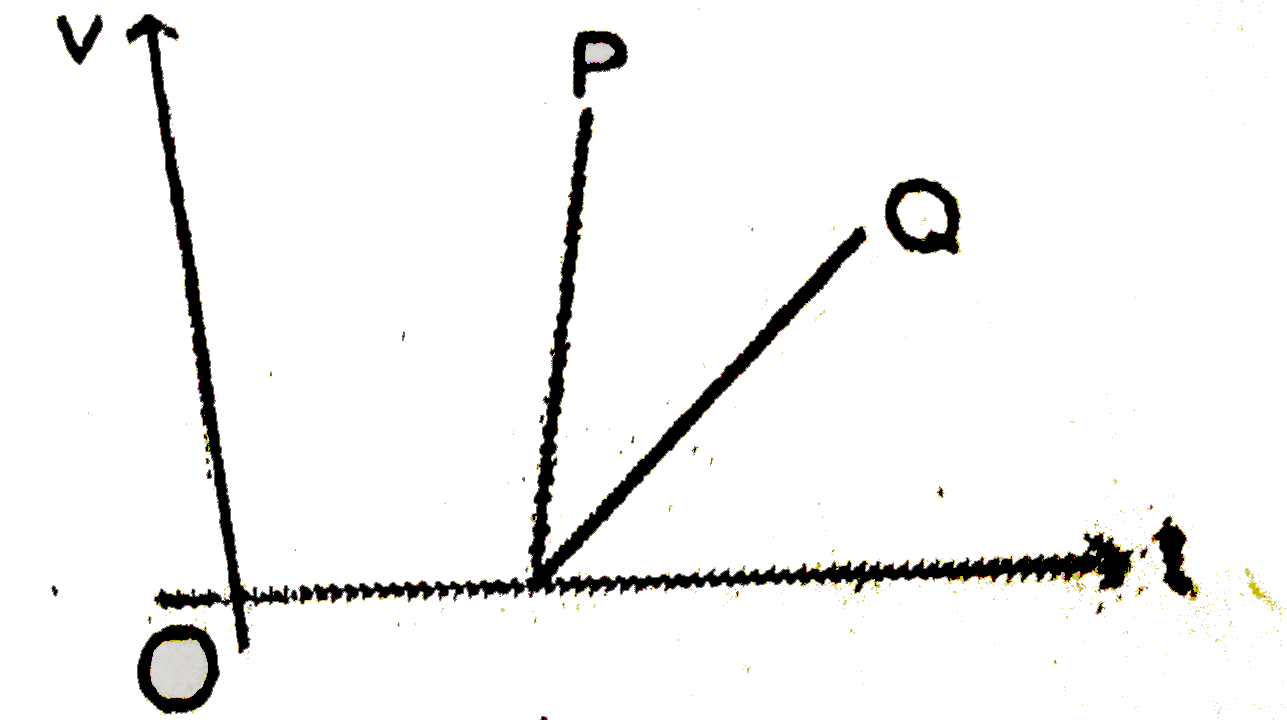The graph for two particles and are given in the figure. Consider the following statements(s). Then, which of the following statement(s) is/are True:

Their relative velocity is non-zero but constant
Their relative velocity is continuously increasing
Their relative acceleration is non-zero but constant
Their relative acceleration continuously increse
The correct Answer is:B, C
Step by step video, text & image solution for The v-t graph for two particles P and Q are given in the figure. Consider the following statements(s). Then, which of the following statement(s) is/are True: by Physics experts to help you in doubts & scoring excellent marks in Class 11 exams.
Topper's Solved these Questions
- BOOK - DC PANDEYCHAPTER - KINEMATICS 1EXERCISE - COMPREHENSION_TYPE19videos
KINEMATICS 1
- BOOK - DC PANDEYCHAPTER - KINEMATICS 1EXERCISE - MATCH THE COLUMN10videos
KINEMATICS 1
- BOOK - DC PANDEYCHAPTER - KINEMATICS 1EXERCISE - INTEGER_TYPE15videos
KINEMATICS 1
- BOOK - DC PANDEYCHAPTER - KINEMATICSEXERCISE - INTEGER_TYPE11videos
KINEMATICS
- BOOK - DC PANDEYCHAPTER - LAWS OF MOTIONEXERCISE - Medical entrances gallery39videos
LAWS OF MOTION
Similar Questions
Knowledge Check
- Question 1 - Select One
Which of the following statements (s)is/are true?
Aa) Differentiable function satisfying f(−1)=f(1) and f'(x)≥0 for all x must be a constant function on the interval [−1,1].Bb) There exists a function with domain R satisfying f(x) lt 0, for all x, f'(x) gt 0 for all x and f''(x0 gt 0 for all x.Cc) If f''(x) = 0 then (c,f(c)) is an inflection point.Dd) Suppose f(x) is a function whose derivative is the function f(x)=2x2+2x−12. Then f(x) is decreasing for −3<x<2 and concave up for x>−12. - Question 2 - Select One
Which of the following statements (s) is/are true ?
Aa) Differentiable function satisfying f(−1)=f(1) and f'(x)≥0 for all x must be a constant function on the interval [−1,1].Bb) There exists a function with domain R satisfying f(x) lt 0, for all x, f'(x) gt 0 for all x and f''(x0 gt 0 for all x.Cc) If f''(x) = 0 then (c,f(c)) is an inflection point.Dd) Suppose f(x) is a function whose derivative is the function f(x)=2x2+2x−12. Then f(x) is decreasing for −3<x<2 and concave up for x>−12. - Question 3 - Select One or More
Which of the following statements (s) is/are true?
Alimx→aax−xaxx−aa=−1 then a is 1Blimn→∞logn−1n.Logn(n+1)n.log(n+1)(n+2)………log(n5−1)n5=5Climx→nlogx2+1x+1(√x2+1−x)=1Dlimx→0y→0x2y=0, when (x,y) → (0,0) along the curve y2=x3
Which of the following statement (s) is true?
View SolutionConsider the following statements (s) which of the following is false ?
View SolutionWhich of the following statements(s) is (are) true?
View SolutionWhich of the following statement(s) in (are) true ?
View SolutionWhich of the following statement(s) is/are with true ?
View Solution

